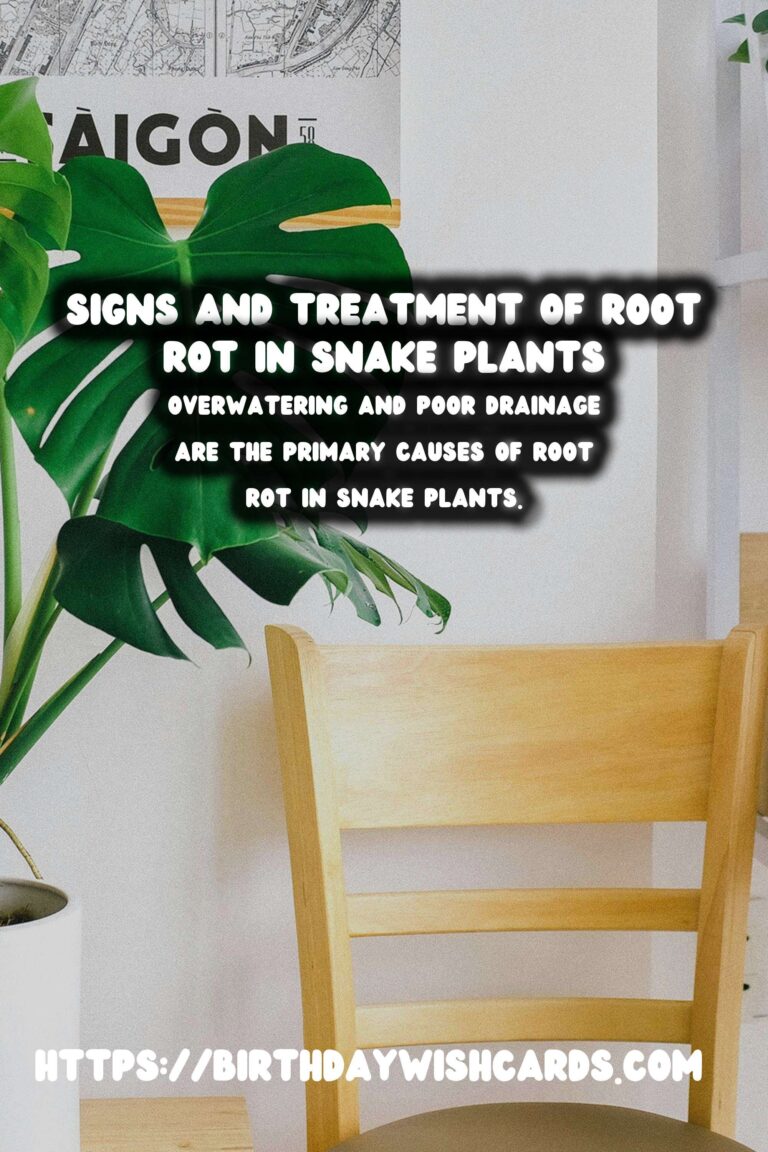
Snake plants, known scientifically as Sansevieria, are popular for their architectural shape and low maintenance requirements. However, they are not immune to root rot, a common issue for many houseplants. Understanding how to identify and treat root rot is essential for maintaining the health of your snake plant.
What is Root Rot?
Root rot is a condition where the roots of a plant begin to decay due to excess water and poor drainage. This condition is primarily caused by fungal infections that thrive in overly moist soil. For snake plants, which prefer to dry out between waterings, root rot can be particularly damaging.
Signs of Root Rot in Snake Plants
Identifying root rot early can save your snake plant from irreversible damage. Here are some common signs to look out for:
- Yellowing Leaves: One of the first signs of root rot is yellowing leaves. If you notice the leaves of your snake plant starting to turn yellow, it may be an indication that the roots are suffering.
- Soft or Mushy Leaves: Healthy snake plant leaves should be firm. If you notice them becoming soft or mushy, it could be a sign of excess moisture and root rot.
- Unpleasant Odor: Root rot often causes a foul smell emanating from the soil. This is due to the decaying roots and fungal growth.
- Stunted Growth: If your snake plant is not growing as expected, or if new growth appears weak and discolored, root rot might be the culprit.
Causes of Root Rot in Snake Plants
Understanding the causes of root rot can help prevent it. The main causes include:
- Overwatering: Snake plants require infrequent watering. Overwatering is the most common cause of root rot.
- Poor Drainage: Using pots without adequate drainage holes or planting in soil that retains too much moisture can lead to root rot.
- Incorrect Soil Mix: A well-draining soil mix is critical. Heavy soils that hold onto water are unsuitable for snake plants.
- Low Temperatures: Cold conditions can exacerbate moisture retention, making root rot more likely.
How to Treat Root Rot in Snake Plants
If you suspect your snake plant has root rot, quick action is essential. Here’s how to treat it:
- Remove the Plant: Gently remove the plant from its pot. Be careful to avoid further damage to the roots.
- Inspect the Roots: Trim away any brown, mushy, or smelly roots. Healthy roots should be white and firm.
- Repot the Plant: Use fresh, well-draining soil and a pot with adequate drainage. Ensure the pot is clean to prevent fungal spores from remaining.
- Adjust Watering Schedule: Allow the soil to dry out between waterings. Monitor the plant and water sparingly.
- Improve Drainage: Ensure the pot has drainage holes and consider adding materials like perlite or sand to improve soil drainage.
Preventing Root Rot in Snake Plants
Prevention is the best strategy when it comes to root rot. Here are some tips to prevent root rot in snake plants:
- Correct Watering: Water only when the top inch of soil is dry. It’s better to underwater than overwater.
- Use Appropriate Soil: A cactus or succulent soil mix is ideal for snake plants.
- Ensure Proper Pot Drainage: Use pots with drainage holes and avoid letting the plant sit in water.
- Maintain Optimal Conditions: Keep snake plants in a warm environment with adequate light.
Conclusion
Root rot is a serious threat to snake plants, but with proper care and attention, it can be prevented and treated effectively. By understanding the signs and causes of root rot, you can ensure your snake plant remains healthy and thriving for years to come.
Snake plants are susceptible to root rot, a condition caused by excess water and poor drainage. Signs of root rot in snake plants include yellowing leaves, soft or mushy leaves, and an unpleasant odor. Overwatering and poor drainage are the primary causes of root rot in snake plants. To treat root rot, remove the plant, trim affected roots, and repot in fresh, well-draining soil. Prevent root rot by watering correctly, using appropriate soil, and ensuring proper pot drainage. 
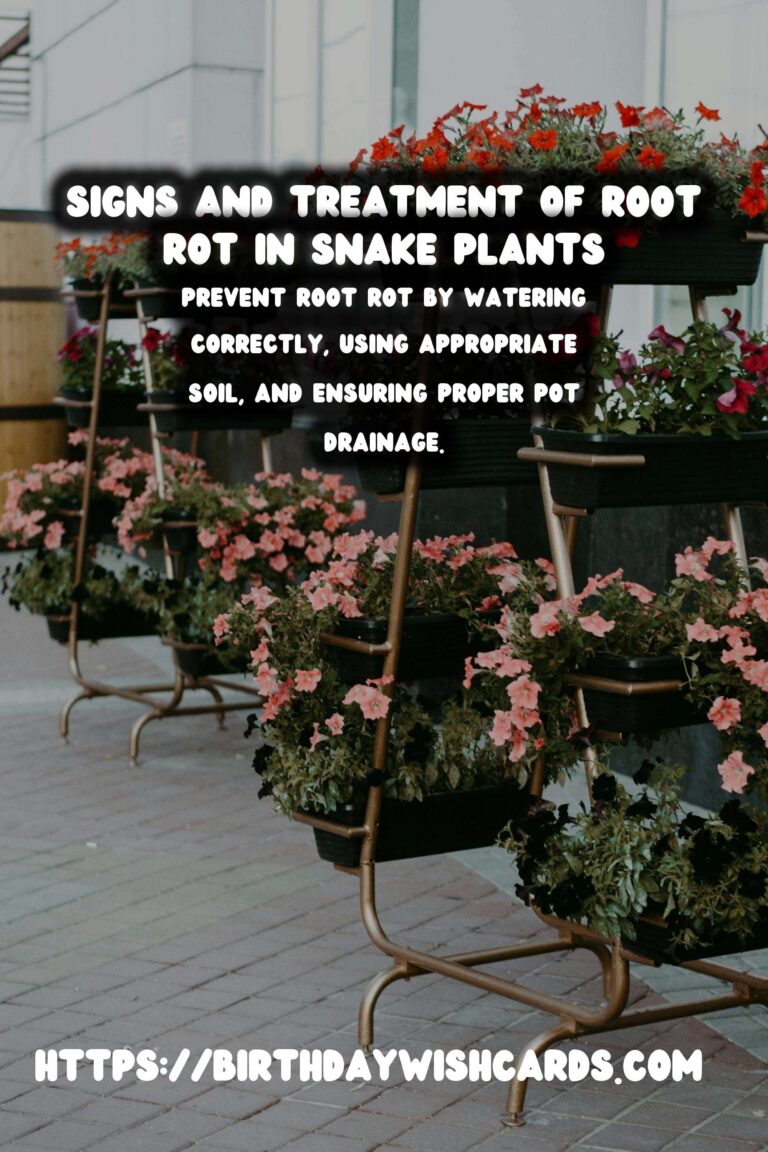
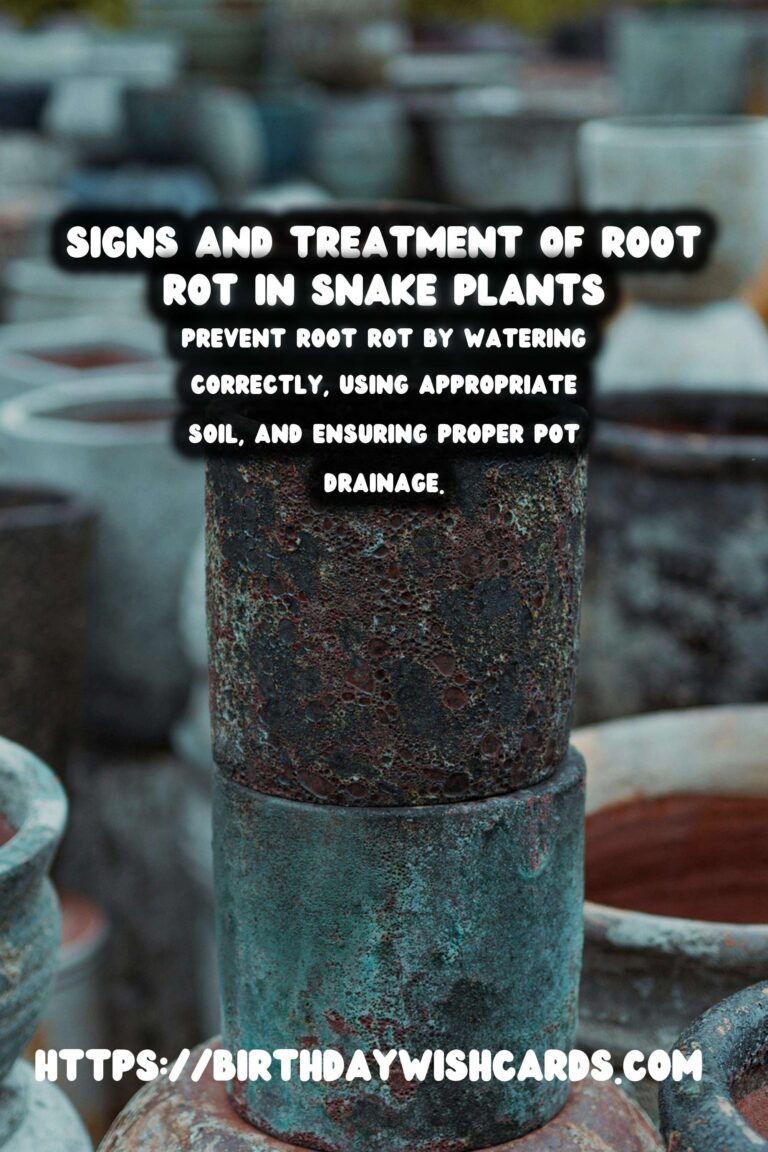
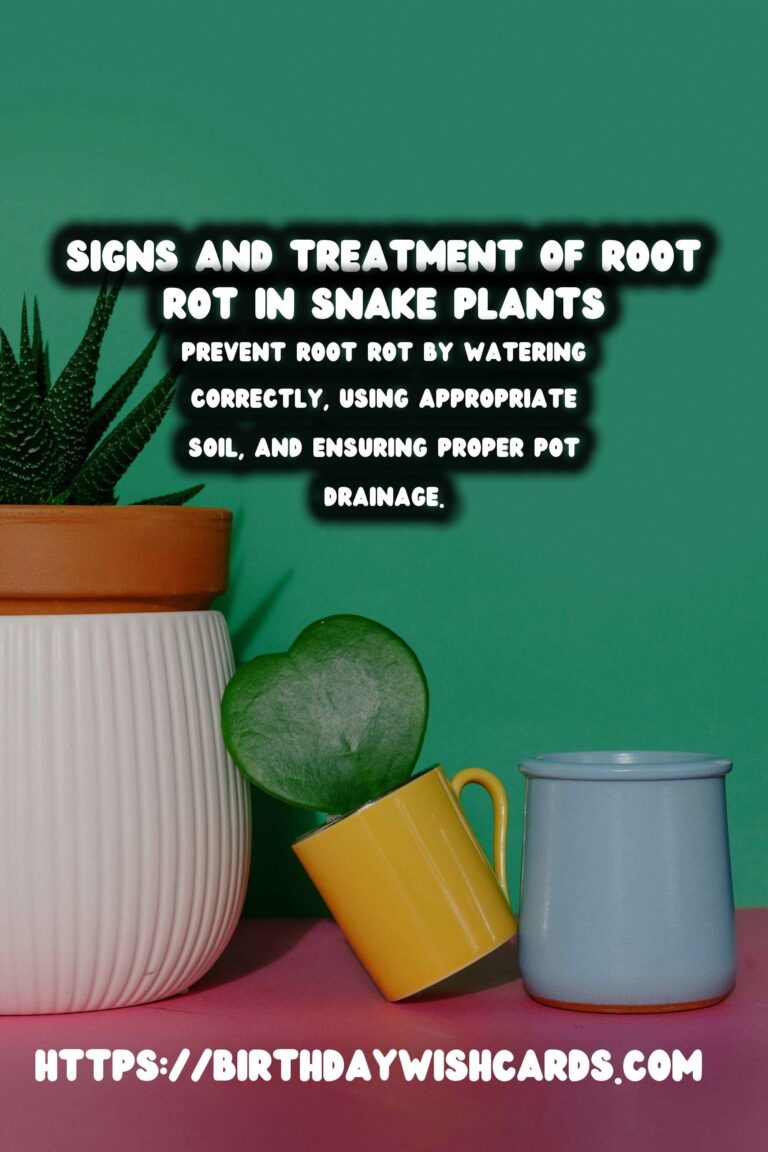
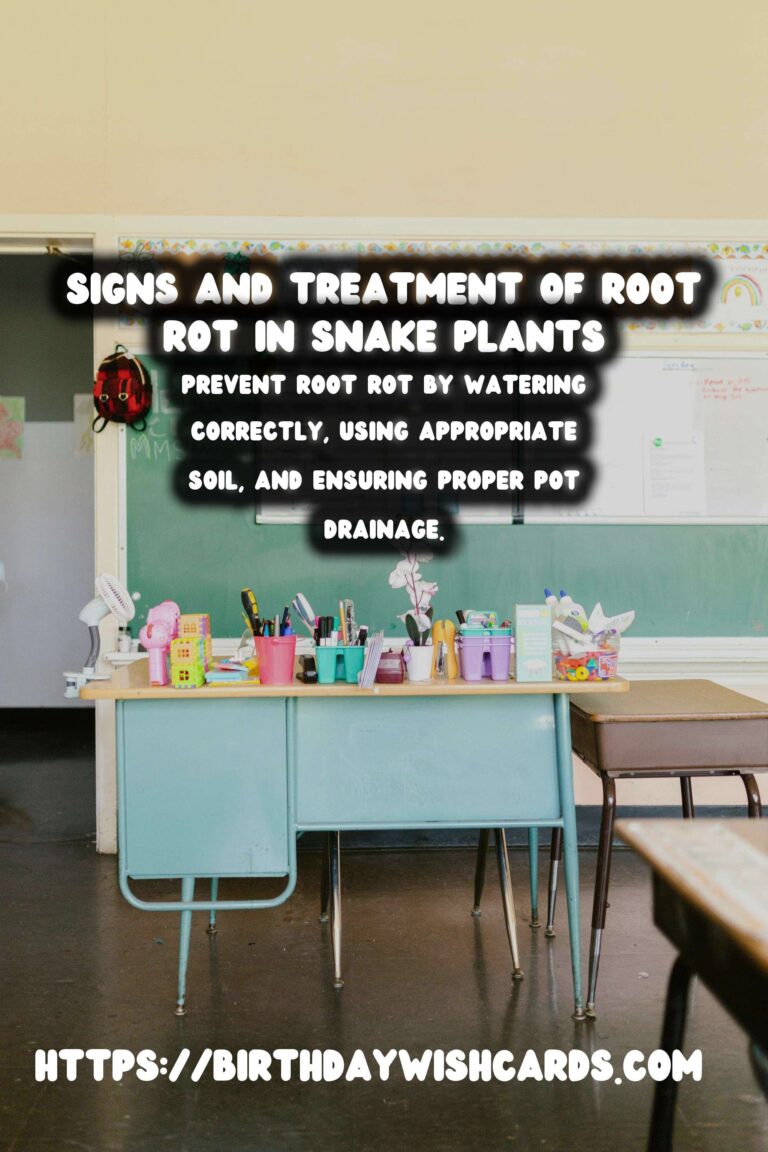
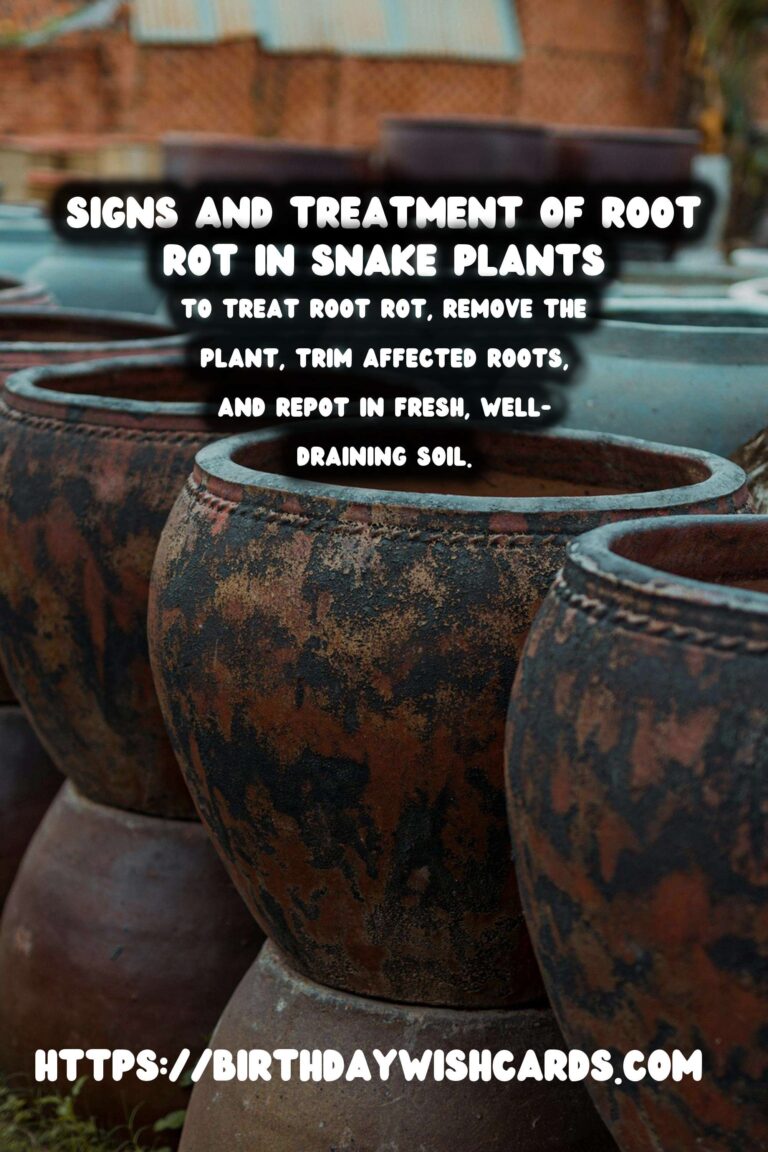


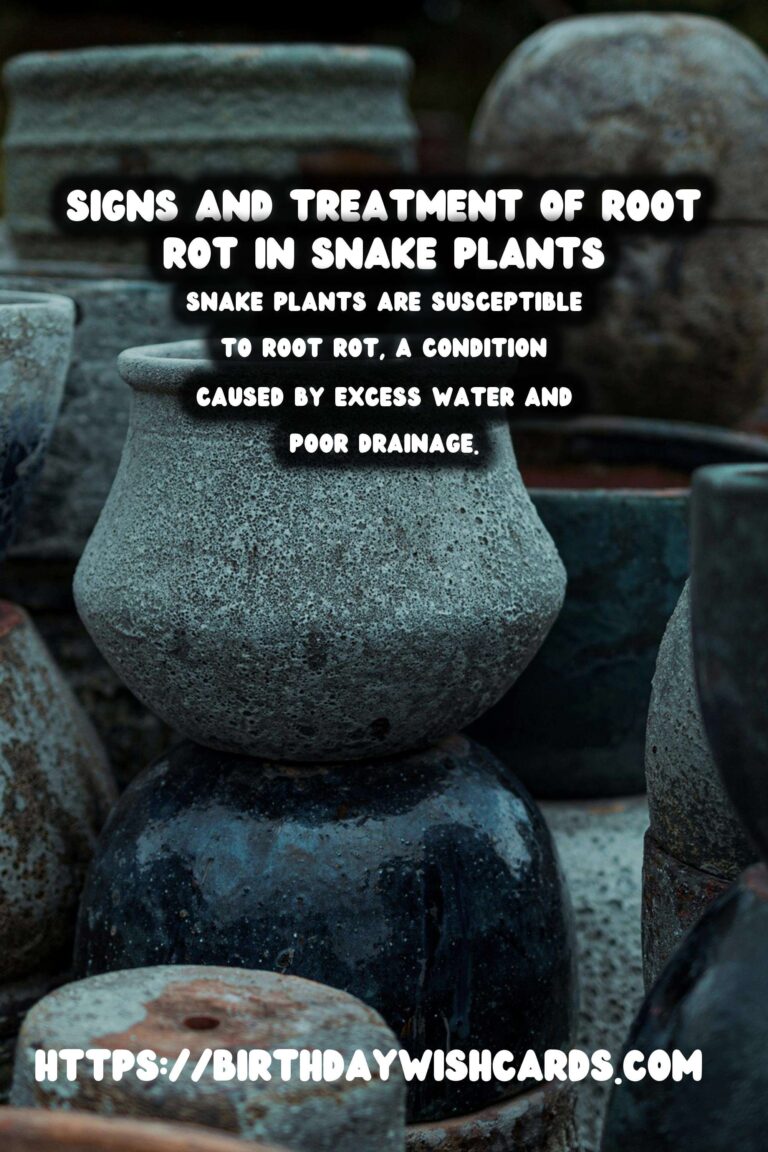
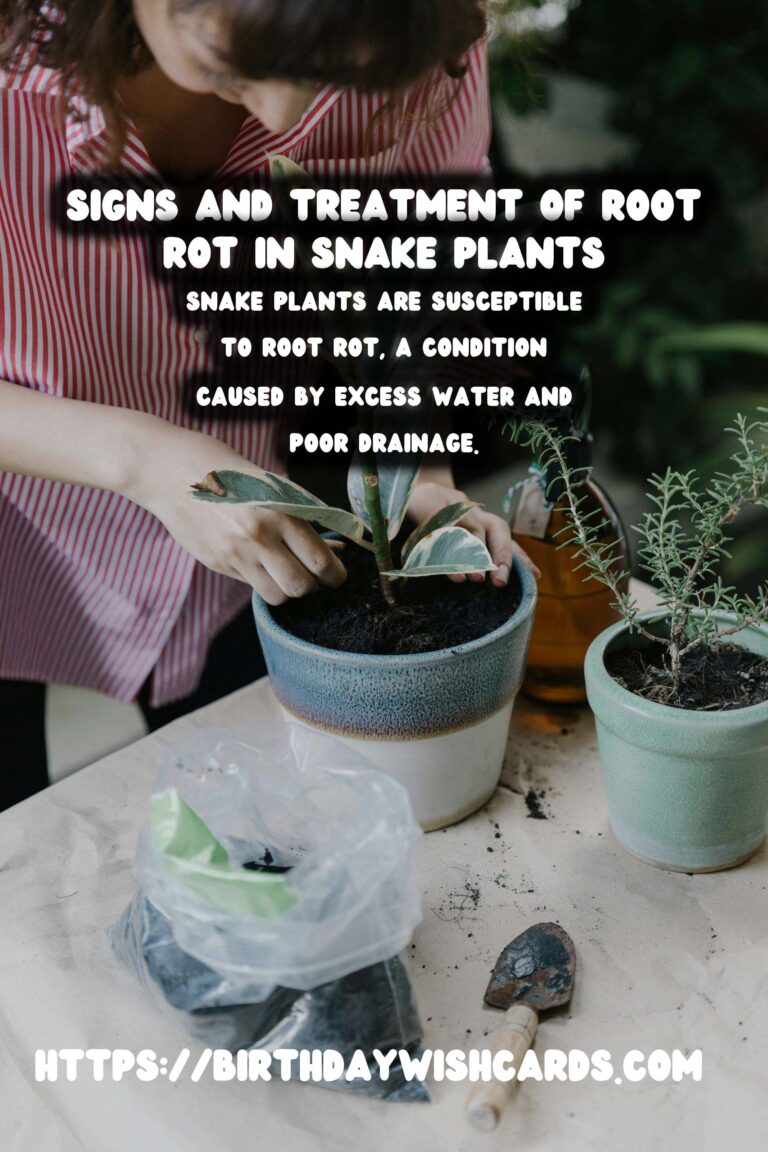
#SnakePlants #RootRot #PlantCare #GardeningTips #Houseplants




